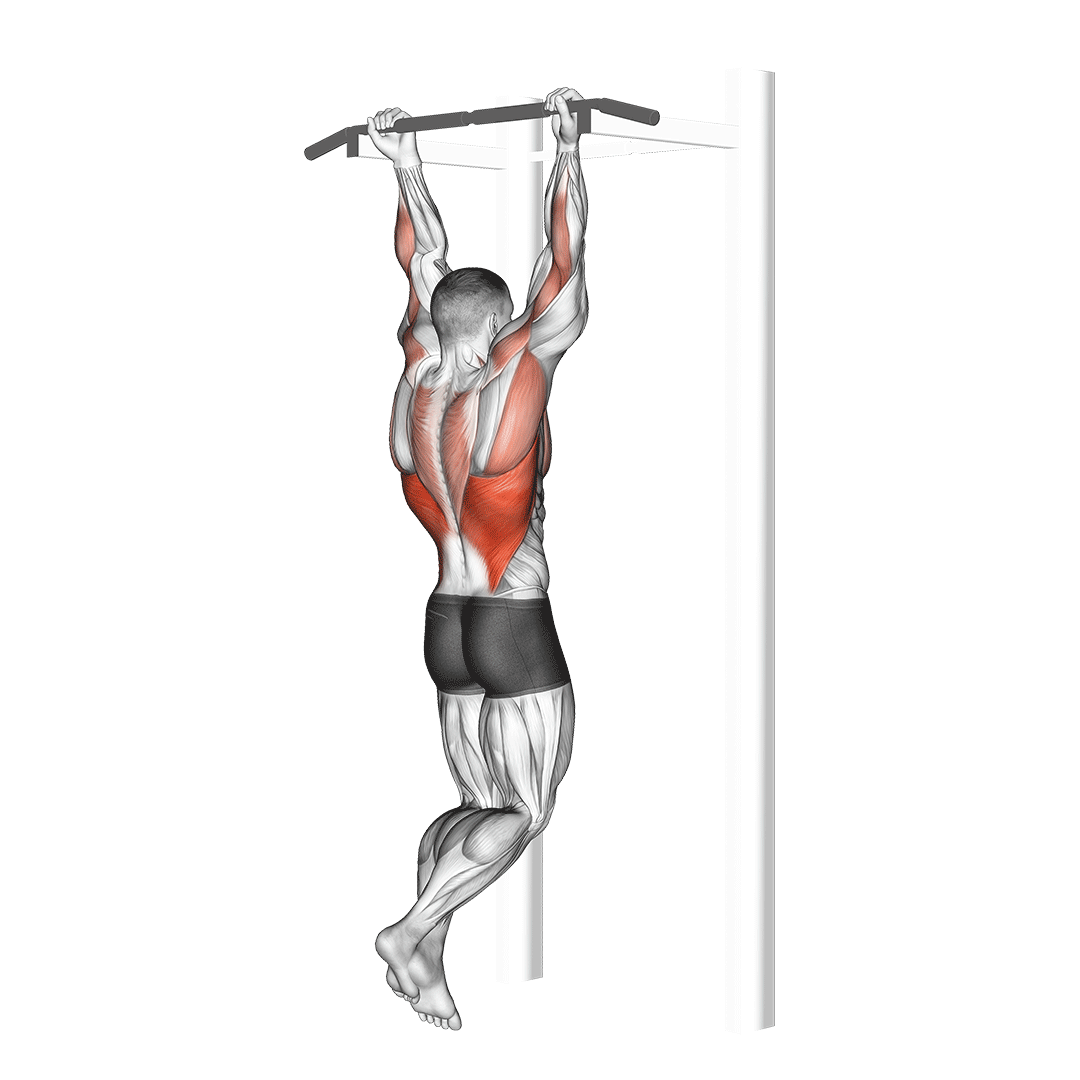Mastering the Chin-Up is essential for developing powerful lats and enhancing back strength. This exercise not only shapes your upper body but also boosts functional strength. Regularly performing chin-ups improves grip strength, posture, and overall workout performance. As you progress, you’ll unlock new potential in your fitness journey.
The chin-up primarily targets the latissimus dorsi—the key back muscles that provide strength and definition. It also engages your biceps, shoulders, and core, fostering a well-rounded upper body. To maximize benefits, aim for two to three sessions each week, allowing adequate recovery time for muscle growth. Always prioritize good form to avoid injury; focus on controlled movements and keep your shoulders down.
A pull-up bar is crucial for this exercise. Beginners may benefit from resistance bands for support, allowing a gradual build-up of strength. Remember, seeking assistance is a sign of commitment to your progress. With determination and practice, you’ll master the chin-up, significantly enhancing your fitness capabilities and confidence.
How to Do a Chin-Up

Begin by hanging from a pull-up bar with an underhand grip (palms facing you) and your hands shoulder-width apart. Your arms should be fully extended, and your body should be straight, with your feet off the ground.
- Engage your core and pull your shoulder blades down and back.
- Exhale as you pull your body upward, bending your elbows and bringing your chin above the bar.
- Pause briefly at the top, ensuring your chin clears the bar.
- Inhale as you lower your body back to the starting position in a controlled manner.
Maintain steady breathing throughout the exercise, exhaling during the upward phase and inhaling as you lower yourself down.
Common Mistakes
- Swinging the Body: Incorporating momentum by swinging legs or torso reduces effectiveness. Keep your core tight and body straight to maximize results.
- Neglecting the Core: Failing to engage the core leads to improper form and instability. Actively engage your abdominal muscles to support your spine.
- Incomplete Range of Motion: Not bringing your chin above the bar diminishes benefits. Ensure full range by pulling your chin over the bar completely.
- Rushing the Descent: Lowering too quickly can cause injuries and limit strength gains. Control your descent by lowering slowly and steadily.
- Incorrect Grip Width: Gripping too wide or narrow strains shoulders and reduces efficiency. Use a shoulder-width grip to maintain optimal form.
Benefits of Mastering the Chin-Up
- Enhanced Upper Body Strength: Targets the lats, biceps, forearms, and shoulders, promoting significant muscle development and functional strength for pulling movements.
- Improved Core Stability: Engaging the core maintains proper alignment and control, translating to better overall athletic performance.
- Better Posture: Strengthening upper back muscles counteracts effects of prolonged sitting, improving postural alignment.
- Increased Grip Strength: Develops grip strength essential for sports, weightlifting, and daily activities.
- Caloric Burn and Metabolic Boost: Involves multiple muscle groups, increasing energy expenditure and aiding in weight management.
Exercise Variations
Alternative Exercises
Safety Precautions
Before attempting chin-ups, ensure you have a solid foundation in upper body strength. If you’re new to this exercise, start with assisted chin-ups using a resistance band or an assisted pull-up machine to avoid straining your muscles and joints. Progress slowly, focusing on form rather than the number of repetitions, to develop strength and technique safely.
Level Up Your Fitness: Join our 💪 strong community in Fitness Volt Newsletter. Get daily inspiration, expert-backed workouts, nutrition tips, the latest in strength sports, and the support you need to reach your goals. Subscribe for free!
Always inspect the equipment for stability before use. Make sure the pull-up bar is securely mounted and can support your weight without risk of injury. Perform chin-ups in a space free from obstructions to avoid accidental collisions while exercising. Wearing appropriate footwear with good grip can prevent slipping and provide better support during your workout.
Listen to your body throughout the exercise. If you feel any sharp pain, especially in your shoulders or elbows, stop immediately to prevent potential injury. Warm up your muscles beforehand with dynamic stretches and mobility exercises. Incorporating a cooldown routine with static stretching after your workout can aid recovery and enhance flexibility.
Level Up Your Fitness: Join our 💪 strong community in Fitness Volt Newsletter. Get daily inspiration, expert-backed workouts, nutrition tips, the latest in strength sports, and the support you need to reach your goals. Subscribe for free!
FAQs
How many chin-ups should I aim for as a beginner?
As a beginner, focus on performing as many quality repetitions as you can with proper form, even if it’s just one or two. Gradually increase the number as your strength improves.
What’s the difference between chin-ups and pull-ups?
Chin-ups use an underhand grip (palms facing you), emphasizing the biceps and lats. Pull-ups use an overhand grip (palms facing away), targeting the upper back and rear shoulders more intensely.
Can chin-ups help me build muscle mass?
Yes, chin-ups are effective for building muscle mass in the back, biceps, and shoulders when performed regularly and with progressive overload.
How can I improve my grip strength for chin-ups?
Incorporate exercises like farmer’s walks, dead hangs, and forearm curls into your routine to enhance grip strength, benefiting your chin-up performance.
Final Thoughts
Mastering the chin-up is a powerful way to build stronger lats and enhance your back strength. This exercise not only shapes your upper body but also improves functional strength, grip, and posture. With dedication and consistent practice, you’ll unlock new levels of fitness and confidence.
[For more tips on improving your pull-up technique, check out our Ultimate Pull-Up Guide.]








